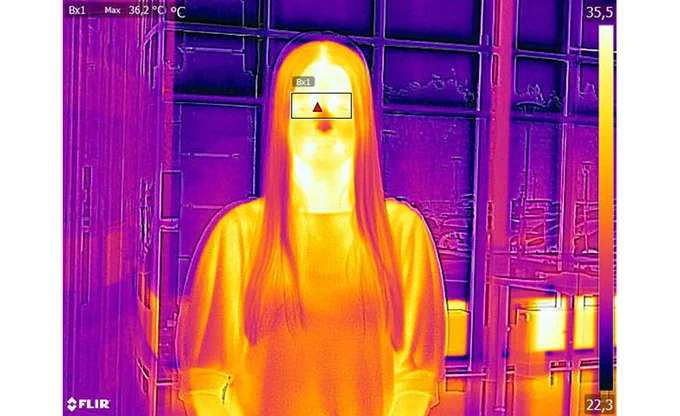

Jesse Peltan
@JessePeltan
On a mission to build Type 1 Civilization and restore the biosphere
Joined May 2019
631 Following 55.1K Followers
The physics of heat transfer are way cooler than you think.
If we designed homes with them in mind, they'd be a lot more resilient and energy efficient, and people would be a lot more comfortable.
Insulation standards and HVAC systems are designed around maintaining the air temperature inside a building, but air temperature is only a tiny slice of the picture.
In typical conditions, only ~15% of the human body's heat loss is from convection.
~60% is from radiation, and ~20% is from evaporation (breathing and sweating).
Your body glows like a light bulb with infrared radiation. You are constantly emitting infrared radiation into the environment and absorbing infrared radiation from the environment.
Radiative power scales with the 4th power of temperature, so even small changes in temperature result in large changes in heat flux.
If your skin temp is 34°C (93.2°F), you emit 505 W/m^2.
A wall at 10°C (50°F) emits 364 W/m^2 while a wall at 40°C (104°F) emits 545 W/m^2.
Your body is ~100 W and ~2 m^2. You need a net cooling of ~50 W/m^2 to maintain your body temperature.
If you weren't constantly bathed in infrared radiation, you'd quickly lose heat to the environment. If you're surrounded by hot surfaces, you can be baked by infrared even if the air temperature is low.
The temperature of the walls, ceiling, and floor is more important than temperature of the air.
Underinsulated surfaces can be cold even when the air is warm, and hot even when the air is cold. This (and humidity) is why your house at 70°F doesn't feel the same in the winter and the summer.
Doubling the amount of insulation in a home cuts the energy required to maintain a given air temperature in half, but it also cuts the differential between the temperature of the walls and the air.
With better insulation, not only do you not need as much energy to maintain the same air temperature, you don't even have to maintain the same air temperature.
Air conditioning can reduce humidity, but most air conditioners can't intentionally control humidity, and most HVAC system have no way to increase humidity.
Better control over humidity reduces the temperature differential your house has to maintain with the outside to provide the same heat transfer for the people inside.
Having air that's not overly dry in the winter means it doesn't have to be as warm to be comfortable. Having air that's not overly humid in the summer means it doesn't have to be as cold.
The goal is to maintain human body temperature, not air temperature. Radiation and evaporation make up most of the heat transfer.
Looking only at air temperature completely misses the big picture. We underinsulate our homes and don't provide adequate control over the aspects that are most important for comfort.
Insulation provides a much larger efficiency benefit than you'd expect from a simple Manual J calculation. That's compounded by the fact that the economic value of that energy savings is far larger than flat volumetric pricing indicates. (because insulation provides the most benefit in extreme conditions where capacity is constrained and prices are high)
Heat and cooling are the majority of energy use in homes, and the vast majority of energy costs.
Real consideration of the physics of heat transfer and the economics of energy systems in the way we design homes and HVAC systems would provide massive economic benefits.
Show more


0
0
32
380
62














